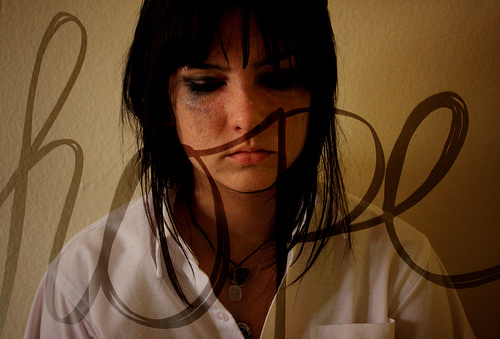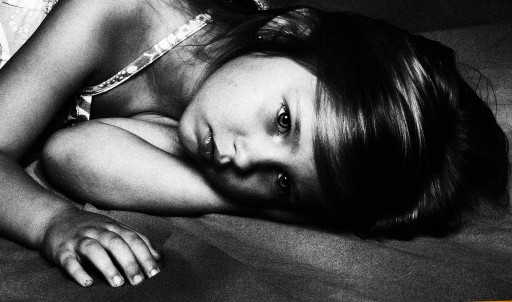[John Palfrey and I originally wrote this as an op-ed for the Huffington Post. See HuffPo for more comments.]
On 22 September 2010, the wallet of Tyler Clementi – a gay freshman at Rutgers University – was found on the George Washington Bridge; his body was found in the Hudson River the following week. His roommate, Dharun Ravi, was charged with 15 criminal counts, including invasion of privacy, bias intimidation, and tampering with witnesses and evidence tampering. Ravi pleaded not guilty.
Ravi’s trial officially begins this week, but in the court of public opinion, he has already been convicted. This is a terrible irony, since the case itself is about bullying.
Wading through the news reports, it’s hard to tell exactly what happened in the hours leading up to Clementi’s suicide. Some facts are unknown. What seems apparent is that Clementi asked Ravi to have his dormroom to himself on two occasions – September 19 and 21 – so that he could have alone time with an older gay man. On the first occasion, Ravi appears to have jiggered his computer so that he could watch the encounter from a remote computer. Ravi announced that he did so on Twitter. When Clementi asked Ravi for a second night in the room, Ravi invited others to watch via Twitter. It appears as though Clementi read this and unplugged Ravi’s computer, thereby preventing Ravi from watching. What happened after this incident on September 21 is unclear. A day later, Clementi’s body was discovered.
The media-driven narrative quickly blamed Ravi and his friend Molly Wei, from whose room Ravi watched Clementi. Amidst a series of other highly publicized LGBT suicides, Clementi’s suicide was labeled as a tragic product of homophobic bullying. Ravi has been portrayed as a malicious young man, hellbent on making his roommate miserable. Technology was blamed for providing a new mechanism by which Ravi could spy on and torment his roommate. The overwhelming presumption: Ravi’s guilty for causing Clementi’s death. Ravi may well be guilty of these crimes, but we have trials for a reason.
As information has emerged from the legal discovery process, the story became more complicated. It appears as though Clementi turned to online forums and friends to get advice; his messages conveyed a desire for getting support, but they didn’t suggest a pending suicide attempt. In one document submitted to the court, Clementi appears to have written to a friend that he was not particularly upset by Ravi’s invasion. Older digital traces left by Clementi – specifically those produced after he came out to and was rejected by those close to him – exhibited terrible emotional pain. At Rutgers, Clementi appears to have been handling his frustrations with his roommate reasonably well. After the events of September 20 and 21, Clementi appears to have notified both his resident assistant and university officials and asked for a new room; the school appears to have responded properly and Clementi appeared pleased.
The process of discovery in a lawsuit is an essential fact-finding exercise. The presumption of innocence is an essential American legal principle. Unfortunately, in highly publicized cases, this doesn’t stop people from jumping to conclusions based on snippets of information. Media speculation and hype surrounding Clementi’s suicide has been damning for Ravi, but the incident has also prompted all sorts of other outcomes. Public policy wheels have turned, prompting calls for new state and federal cyberbullying prevention laws. Well-meaning advocates have called for bullying to be declared a hate crime.
As researchers, we know that bullying is a serious, urgent issue. We favor aggressive and meaningful intervention programs to address it and to prevent young people from taking their lives. These programs should especially support LGBT youth, themselves more likely to be the targets of bullying. Yet, it’s also critical that we pay attention to the messages that researchers have been trying to communicate for years. “Bullies” are often themselves victims of other forms of cruelty and pressure. Zero-tolerance approaches to bullying don’t work; they often increase bullying. Focusing on punishment alone does little to address the underlying issues. Addressing bullying requires a serious social, economic, and time-based commitment to educating both young people and adults. Research shows that curricula and outreach programs can work. We are badly underfunding youth empowerment programs that could help enormously. Legislative moves that focus on punishment instead of education only make the situation worse.
Not only are most young people often ill-equipped to recognize how their meanness, cruelty, and pranking might cause pain, but most adults are themselves are ill-equipped to help young people in a productive way. Worse, many adults are themselves perpetuating the idea that being cruel is socially acceptable. Not only has cruelty and deception become status quo on TV talk shows; it plays a central role in televised entertainment and political debates. In contemporary culture, it has become acceptable to be outright cruel to any public figure, whether they’re a celebrity, reality TV contestant, or teenager awaiting trial.
Tyler Clementi’s suicide is a tragedy. We should all be horrified that a teenager felt the need to take his life in our society. But in our frustration, we must not prosecute Dharun Ravi before he has had his day in court. We must not be bullies ourselves. Ravi’s life has already been destroyed by what he may or may not have done. The way we, the public, have treated him, even before his trial, has only made things worse.
To combat bullying, we need to stop the cycle of violence. We need to take the high road; we must refrain from acting like a mob, in Clementi’s name or otherwise. Every day, there are young people who are being tormented by their peers and by adults in their lives. If we want to make this stop, we need to get to the root of the problem. We should start by looking to ourselves.
danah boyd is a senior researcher at Microsoft Research and a research assistant professor at New York University. John Palfrey is a professor of law at Harvard Law School.
 Over the last couple of years, I’ve laid awake at night asking myself uncomfortable questions about bullying and teen suicide. I don’t have answers to most of the questions that I have, but I’m choosing to voice my questions, fears, and doubts because I’m not confident that our war on bullying is taking us down the right path. I’m worried about the unintended consequences of our public discourse and I’m worried about the implications that our decisions have on youth, particularly in this high-stakes arena. So I’m asking these four tough questions in the hopes that we can collectively step back and think critically about how we’re addressing bullying as a public issue.
Over the last couple of years, I’ve laid awake at night asking myself uncomfortable questions about bullying and teen suicide. I don’t have answers to most of the questions that I have, but I’m choosing to voice my questions, fears, and doubts because I’m not confident that our war on bullying is taking us down the right path. I’m worried about the unintended consequences of our public discourse and I’m worried about the implications that our decisions have on youth, particularly in this high-stakes arena. So I’m asking these four tough questions in the hopes that we can collectively step back and think critically about how we’re addressing bullying as a public issue. 